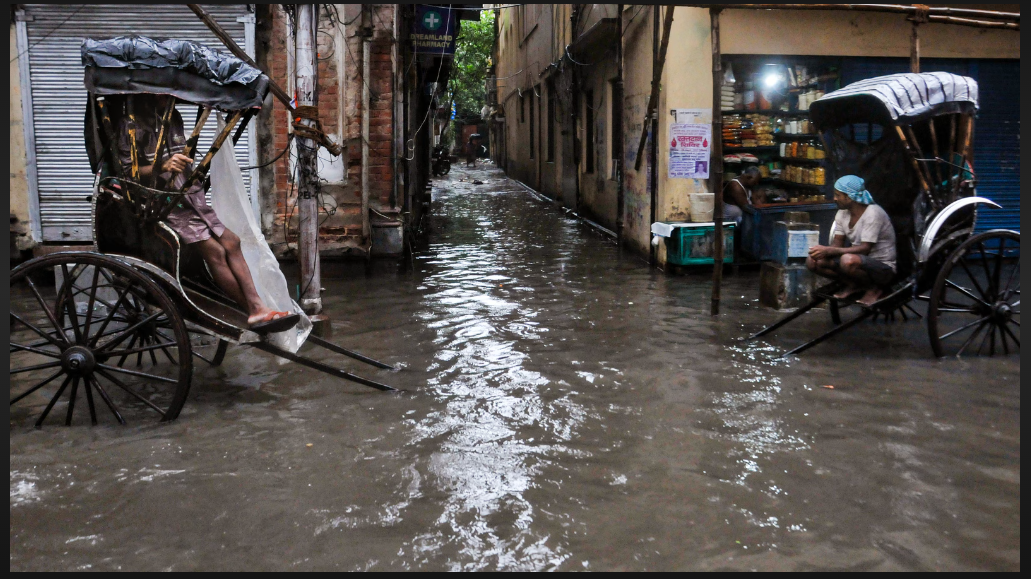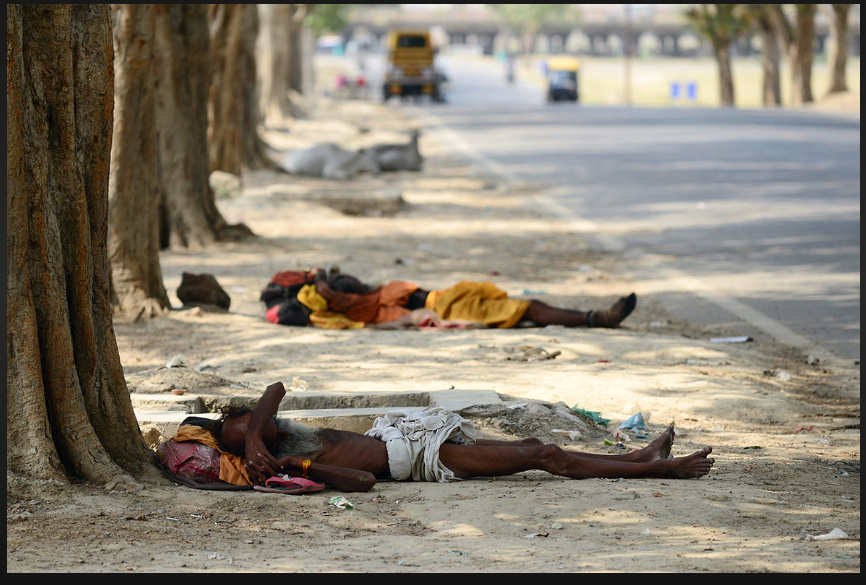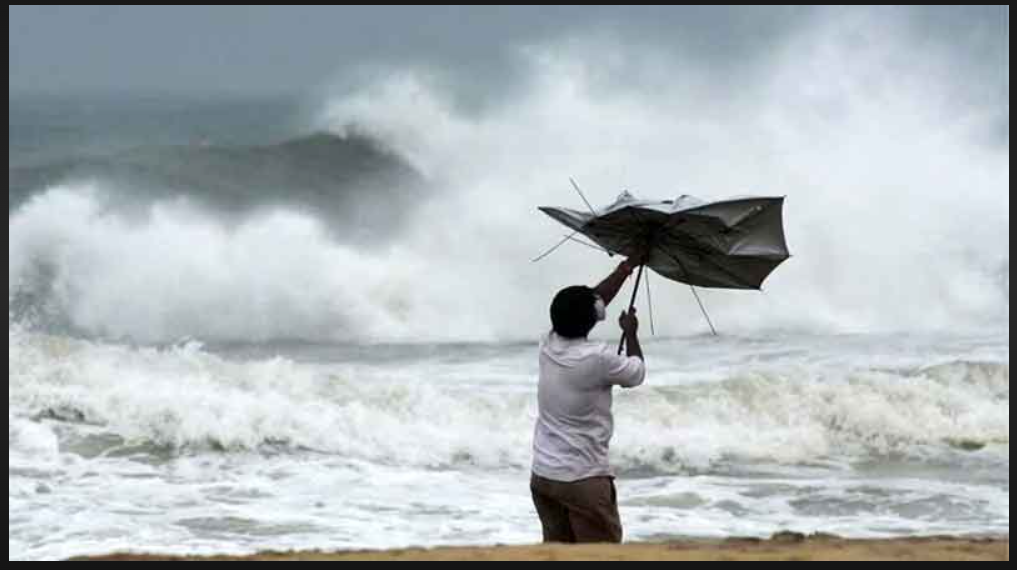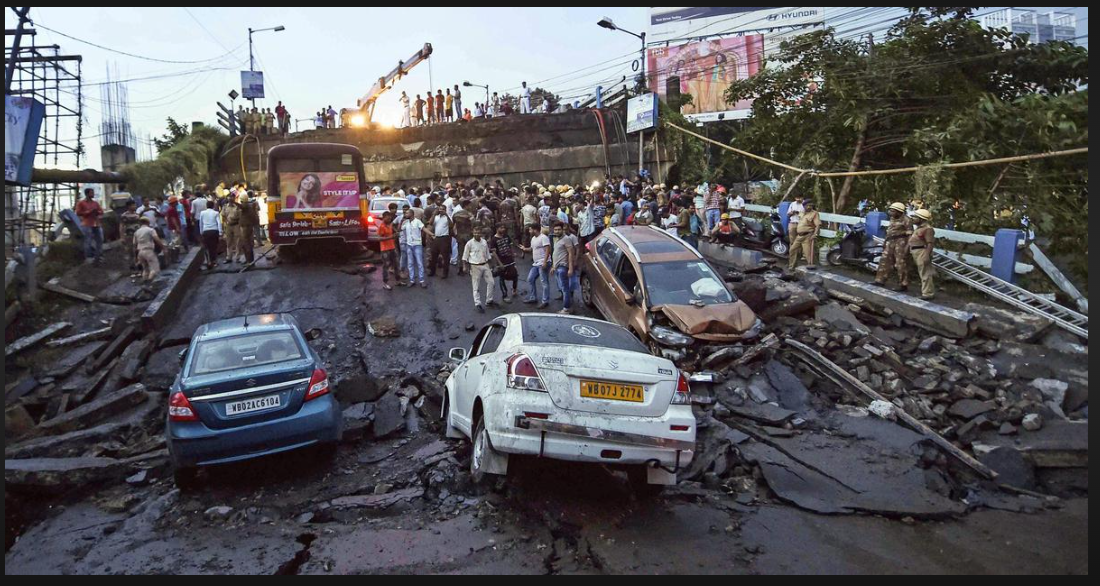
Global warming, natural calamities and inhabitable lands are some of the most commonly uttered words today. Besides the economic and political tension, humankind needs to pay attention to the usage of natural resources and preservation. Looking at the global data one thinks today what have we done to this poor earth? The very same earth that welcomed us like mother, nourished us and made us ready for all the achievements we are proud of?
Besides Mumbai and Chennai Kolkata is facing the possibility of going underwater by the year 2050. Situated at the banks of the Bay of Bengal this city that was and still prides being the cultural capital of India is home to more than 6 crore people. The city was constructed on the banks of the Ganges by the British to utilize this shallow water area for business and harvesting. Now, with the deafening cries of the arrogant Bay of Bengal, the unplanned population rise and water accumulation the city is helplessly drowning in the Bay of Bengal. The more unfortunate thing is people who are currently running the highest risk of drowning have never manhandled nature by any extra carbon footprint of deforesting. Many villages might not have electricity before the sea engulfs them.

(Source: hidustantimes, rikshawpuller are still waiting for a passenger)
Some data that scares
According to a report published by UN Kolkata is now counted among the 8 most vulnerable megacities that will be underwater in the next 30 to 40 years. The city is a coastal city and it runs the risk of facing the maximum amounts of flood by the year 2050 (BBC, 2020). The paper also alluded to the fact that the city is going to get underwater as there are very functional and practical ways in which the rising water from the growing sea could be handled and pumped out from the localities. The report also suggested that since Kolkata is being exposed to aggressive storms and tropical cyclones the loss expected to trigger is $13.5 billion which is equivalent to 1 lakh crore.
Kolkata witnesses tropical weather. The city already has been experiencing a wide range of weather fluctuations throughout the year. The people of this city need to be very much tolerant of heat and rain. The normal temperature during the hot summer months (May-July) has been taking a hike up to a scorching 35.4 degrees Celsius. However, in the last ten years, the temperatures have been seen to go even beyond that. In the last five to ten years the temperature is rising to nothing less than 43 degrees. However, this heat is calling for recurring rainfall and storms (Fuchs., Roland, 2010). These are cooling the atmosphere but since the heat is unexpectedly high the tropical air accumulation is also more than what has been expected. After incurring several damages in the coastal areas slightly exterior to the main city area the temperature on the cloudy days is settled to 25-28 degrees Celsius. However, by this, the city is already half burned. The reports add to the fact that exposure and severity of the heat waves have already killed 2500 people in India in the year 2015.

(Source: ibtimes, people who do not have a home in Kolkata face heatwave)
The first difficult season that reminds people that this is a bad phase when the summer arrives. For the last ten years, the temperatures have been on a rising hike. The management of the heat with the infrastructures around it has somewhat weakened with the rise of ‘urbanization’. As people in the city went from being house dwellers to flat dwellers the architectural ‘developments’ have separated the humans from the archaeological historical knowledge that used to protect them from the scorching heat. Adding to that the heat has risen to more than 5 degrees on average in the last two to three years. Life outside is becoming more difficult as both nature and the system to protect have collapsed together.
When relief comes it does not come in the form of sweet afternoon showers as it used to be. Rather it is a super cyclone which is rather very destructive and aggressive. The Bay Bengal, in recent years, has been found to keep quiet during the most difficult times of the season and later appear with drastic teeth and claw when an innocent presence is required.
The current state of habitation, water supply and sewage
The Ganges River flows through the city. This is the heart of the city along with being the reason for the entire urban development centering the histories. However, as the sewage system has once thrown all the waste of the city to the river water it is now turning to be poisonous. However, the river has not lost its spiritual value further making it an indispensable and unreplaceable water resource for the poor. These urban poor are also living in unstable huts that are not enduring the super cyclones.
The sewage systems are century old and drainage of the waste is not being successfully done even in the Ganges. As a result, the 1852 square kilometre Area of this sewage networking is been overflooded when there is a slight overpour (Nath et al., 2018). The metropolitan area is divided into 20 basic distributions. However, it is unfortunate that the Kolkata municipal area takes responsibility for only 55% of the entire urban area. The rest of the places are under the care of either extended water-clogging systems or local people and their initiatives.
Speaking of which it is an important factor to note that the local people and their sense of responsibility is meeting with the urgency that is. The biggest concern is when big housing complexes are extracting the general water from the soil for domestic usage. This water is not coming from any reservoirs rather this draining is making the soil even more sand-like like and it is becoming prone to dislocation, making the city the further closer to sinking.
Un usual natural calamities: Super Cyclones
With the rising temperatures in the tropical area, the temperatures on the sea level are rising. According to one research, the temperature that incurs cyclone formation on the sea level is 28 degrees centigrade. With the rising temperature record from the last ten years, it can be seen that the sea level temperatures are now hitting 31-32 degrees centigrade (Quint, 2023). The super cyclones have been very much common affairs from the very beginning but the recent series of these cyclones began with Cyclone Aila in 2009. Before this cyclone, Bhola killed about 10000 people in the 1970s. But that was all. After about 40 years this 110 km/per hour windy cyclone hit the city (Basu, 2022). Then Amphan is historically famous. The Bay of Bengal is said to have given birth to 26 of the most deadly 36 cyclones in recent history. This unusual behaviour of nature along with the mismanaged soil and landslides is further pushing the city towards calamity. The mangrove forests are fast decreasing making the coastal population even more vulnerable. The global warming is a chained event. One cannot expect that one mistake or disbalance somewhere will not impact the other but it is however possible to have the entire as if the whole of the Bay of Bengal is coming forward in many ways to engulf the ‘city of Joy’.

(Source: sangbadpratidin, a man facing the storms)
When is this happening and if there are any ways to stop it
The data and the figures around it almost indicate that a total doomsday is coming. However, still, this might not exactly be the condition. The ‘city of joy’ could still be preserved if the resource management and distribution could be done properly. The first thing that this city needs is trees. Kolkata has been a very green land as it is situated on the very fertile Ganges river bed but with adverse use of resources for industrial development and habitation development, the city has adversely lost some of its major resources that would act as both natural cooler and pollution controllers. The second thing that the city urgently needs is the preservation of the natural wetlands. These lands have the capacity the retain water the way it needs to hold the soil together. Without this, there are possibilities for the city soil to not hold its shape. The infrastructure on top of it will collapse.
The third and most important as well as urgent requirement is controlling the population and the infrastructure of the city (Shastri et al., 2023). Kolkata is famous for heritage buildings that resonate the British architecture and Indian architecture that are neither hardy to keep the structure alive nor are easily shapeable into one uniform group of architecture. Hence, the sinking of the city will only be prohibited if there are possibilities of unified decisions made and implemented.

(Source: scroll.in, image of a collapsed bridge in Kolkata)
Relocation
That is a really difficult thing to even think of given the current circumstances. Relocating about 6 crore people overnight would be way more difficult than healing the city from within. However, although possibilities like that are thin still if doomsday comes rapidly then there might be another history written in Bengal like partition migration. The term ‘climate migrants’ is already making its way and soon people will find their way to a safe place individually if not done by a unified force. Unfortunate losses will occur in any case. Among that people might get back on their feet in due time but history and human kind’s creations along with the heritage will be lost. Some data also suggest that with Kolkata being a sinking city and inhabitable place Bengal might see another migration, famine joblessness four times bigger than the partition (Ray and Shaw., 2016). That being said we the people can probably safeguard all these and stop this calamity if we manage to take responsibility, little by little but consistently and by everybody.
Bibliography
Basu., J (2022) Disaster deaths, sinking: Unprepared Kolkata face multiple climate risks, warns IPCC report (no date) Down To Earth. Available at: https://www.downtoearth.org.in/news/climate-change/disaster-deaths-sinking-unprepared-kolkata-face-multiple-climate-risks-warns-ipcc-report-82004 (Accessed: 13 May 2024).
BBC, (2020) Amphan: Cyclone wreaks deadly havoc in India and Bangladesh (2020) BBC News. BBC. Available at: https://www.bbc.com/news/world-asia-52734259 (Accessed: 13 May 2024).



















